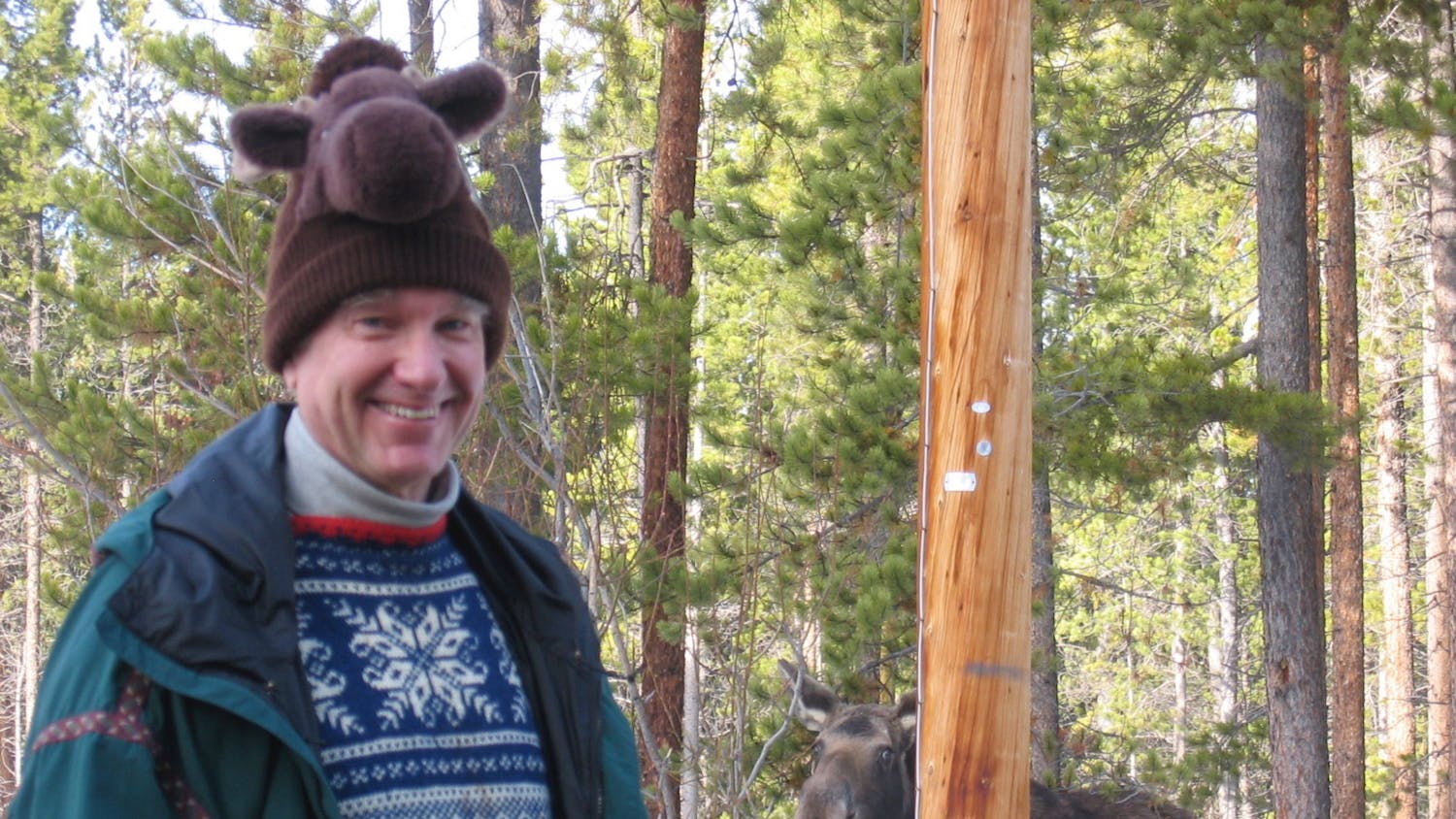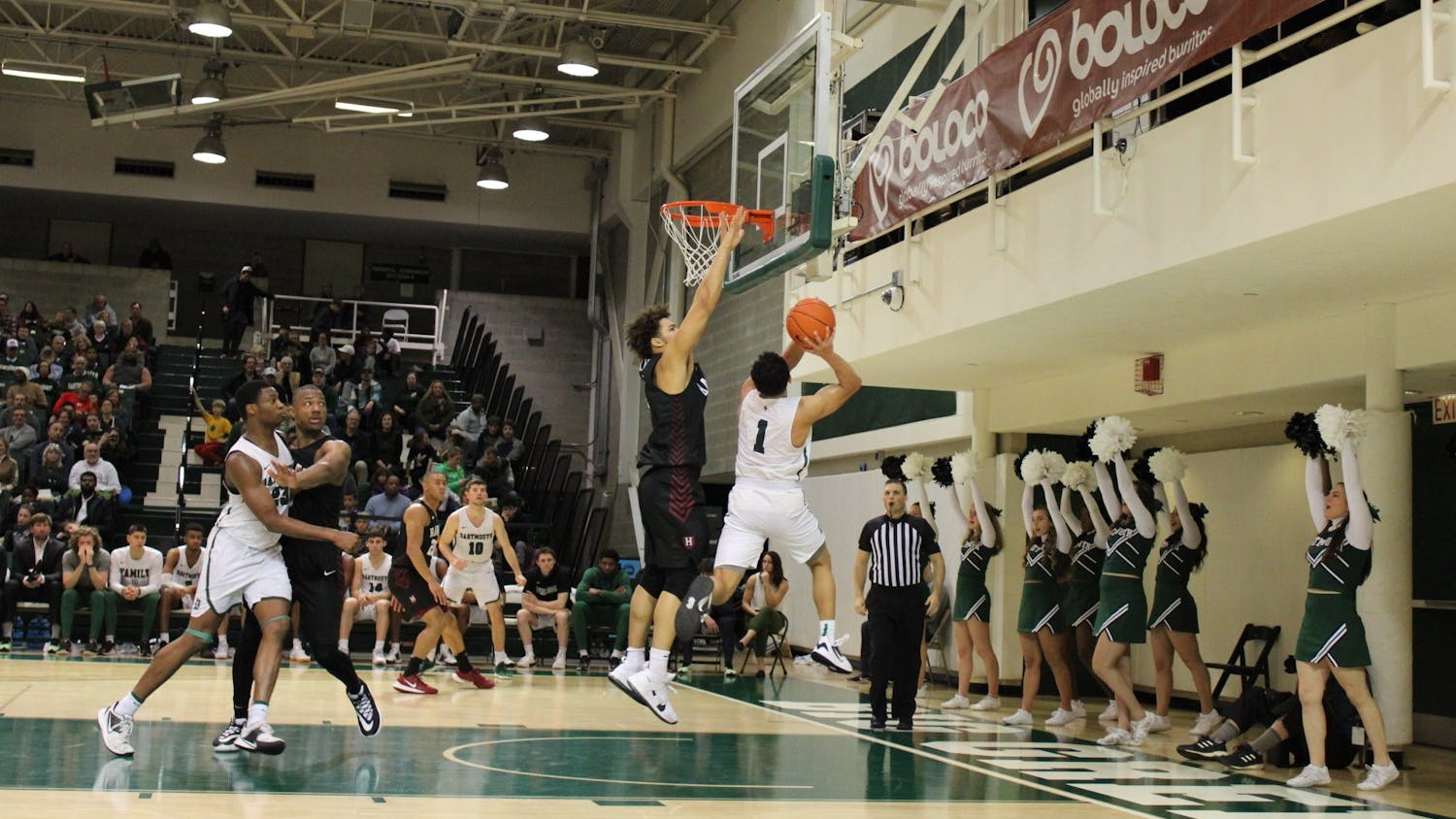This article is featured in the 2020 Fall special issue.
Dartmouth has never had an official mascot. Since the board of trustees voted to remove the Indian as Dartmouth’s unofficial mascot in the 1970s, the Big Green has become Dartmouth’s de facto moniker, despite several student-led efforts to establish a more concrete representation for Dartmouth — whether that’s the Dartmoose or Keggy the Keg.
Efforts to introduce a new mascot have periodically risen up in the decades since the Indian mascot was discontinued. However, these efforts have yet to be successful, and enthusiasm for a new mascot seems to have all but tapered off in recent years.
The rise and fall of the “Dartmouth Indian”
In 1866, Dartmouth students, led by A.A. Thomas, Class of 1867, voted to make the color green Dartmouth’s official school color. Sources debate whether this selection was “inspired” or a “fallback option,” citing Harvard University, Yale University and Brown University’s already-chosen school colors. Later that year, the Dartmouth baseball team wore green uniforms for the College’s first intercollegiate sporting event. This tradition stands today, with Pantone’s PMS 349 serving as the official shade of green used by Dartmouth athletics and College-related merchandise.
In the 1920s, Dartmouth took on a more concrete mascot: the Indian. Chosen for its association with Dartmouth’s founding mission to educate Native Americans, the Indian was primarily used by sportscasters as Dartmouth athletics expanded. A 1972 article from The Dartmouth wrote that the Indian was unofficially selected “to symbolize the savagery of the men of the then almost inaccessible North Woods.”
Although never officially adopted, the Indian mascot appeared on athletic uniforms and College merchandise until the 1970s. In 1971, a group of Native American students at Dartmouth, disturbed by the use of the Indian as a mascot, released a statement declaring that “various traditions and symbols used by the Dartmouth Community are based upon insensitivity to the culture of Native American Peoples.”
Three years later, following a recommendation from the Alumni Council, the Board of Trustees found the use of the Indian “inconsistent with the present institutional and academic objectives of the College in advancing Native American education” and called for its discontinuation. The Big Green, already Dartmouth’s color, took over soon after as the prevailing unofficial mascot.
Calls arise for new mascot
In the years following the Big Green’s ascendance as an unofficial mascot, several student-led initiatives have tried to find a suitable, more engaging replacement. Many of these efforts stemmed from either dissatisfaction with the Big Green as the mascot or were an attempt to further distance Dartmouth from its history with the Indian mascot.
A 1984 Gallup poll revealed that a decade after the Indian’s discontinuation, 58% of respondents had a “very” or “fairly” positive view of Dartmouth’s Indian mascot. However, this level of support was matched by the Timber Wolf. Trailing behind were the Warrior, the Green Knight, the Viking, the Raider, the Buck and the Moose.
In 1996, Hank Brier ’98, Peter Halas ’98, Jay Lavender ’97 and Matt Sechrest ’97, a group of student-athletes, led a campaign calling for the Mountaineers, the Wolves or the Moose as Dartmouth’s new mascot. The athletic director at this time, Dick Jaeger, indicated that he might be on board.
Student Assembly president Jon Heavey ’97, stated that the organization was looking for a “tangible item” to be present at football games. A poll released that fall revealed that the moose was the most popular, with 30% of the vote. Although never approved, from 1997 to the early 2000s, the Dartmouth moose often appeared at athletic events.
Ultimately citing a lack of enthusiasm for the moose — with only 40% support at the height of its popularity — Student Assembly dropped efforts to create an official mascot in the fall of 2003.
Additionally, support for the Indian never entirely dispersed despite attempts to install a new mascot. At a 1983 football game against Cornell University, Dartmouth students unfurled a banner depicting a Native American caricature. Similarly, in 1996, the Conservative Union at Dartmouth passed a resolution backing the Indian amid efforts to establish a new mascot.
Among the Indian’s most vocal backers was The Dartmouth Review. A 1984 article by The Rutland Herald quoted Laura Ingraham ’85, then the editor of the Review, as saying that the College had done a “disservice” by telling students and alumni to “be offended by the Indian symbol.” Ingraham offered that if the symbol was used in a “dignified manner,” then “there would be no problem.” A 1987 ad published in the Review advertised silk ties, boxers and canes featuring the Indian. Review articles about athletics used the Indian to refer to Dartmouth sports teams as recently as 2012.
Another wave of mascot advocacy came about in the winter of 2007, following the protests by Native American students against the sale of T-shirts depicting the Dartmouth Indian in a sexual act and the decision to schedule a hockey game between Dartmouth and the University of North Dakota’s “Fighting Sioux.” The Dartmoose again gained momentum. By the spring of 2008, SA claimed progress on the moose as an “accomplishment” with an official logo in the works, but it slowly faded from the spotlight yet again.
Students, however, are not the only members of the Dartmouth community to have led efforts to find a new mascot. Most recently, former director of the Collis Center and associate dean for student life Joe Cassidy copyrighted an image of the Dartmoose in 2008 to build support for the mascot.
“I realized if we were going to move the conversation forward that we needed to be able to have an image to show,” Cassidy said. “I reached out at that time to one of the top companies that manufacturers collegiate and professional team mascots ... so we could have an example.”
Cassidy identifies many benefits to having a mascot, extending beyond being an active presence on the sidelines of athletic events.
“A true mascot is much more visible as an active and engaging ambassador of the institution,” Cassidy said. “They’re out promoting school pride, from prospective students all the way through Commencement and alumni reunions. They’re out engaged in community service and doing public service appearances. They’re also really good from a revenue standpoint; they help drive sales particularly of apparel.”
Jack-O-Lantern introduces Keggy the Keg
While SA was investigating potential new mascots in the early 2000s, two Dartmouth students, Nic Duquette ’04 and Chris Plehal ’04, both members of the Jack-O-Lantern, came up with a potential solution: Keggy the Keg. An anthropomorphic beer keg, Keggy made his Dartmouth debut at the 2003 Homecoming football game.
Current Jack-O-Lantern president Ira Richardson ’21 said that Keggy was born from the desire to make an “underground mascot” that would not be “offensive” to anyone but still “completely unacceptable” to the College administration. Richardson confirmed that Keggy is a parody of Dartmouth’s drinking culture, but added that part of Keggy’s popularity stems from the fact that students like to drink and “find it funny.”
Keggy’s last appearance was at Green Key during the spring of 2019 — its first appearance in at least five years after having the costume fixed that term.
Richardson said that he doesn’t see Keggy becoming an official mascot anytime soon. He added that despite an apparent ambivalence toward Keggy’s existence, the College has voiced concerns over Keggy showing up at official events such as Commencement, in comparison to student-controlled events such as Green Key.
“I just really can’t imagine the administration ever leaning that far into [that] part of their image,” Richardson said. “I think at this point it’s pretty clear they're trying to downplay as much as possible.” He added that there was a “joke” during the implementation of the hard alcohol ban that Keggy would only be accepted as a mascot for promoting “specifically drinking beer” over liquor.
Mascot adoption efforts stall
Since Keggy’s creation, there has been little movement or discussion about creating an official mascot.
One tool current students have available relative to past efforts of the last 25 years is the internet. Cassidy suggested that online petitions or polling and social media campaigns would make it much easier to establish mascot preferences among students and alumni, in contrast to paper surveys sent out and returned by mail in the past. Cassidy added that modern technology would make it easier “to demonstrate to the trustees that there’s a groundswell of support.”
However, establishing an official mascot does not appear to be high on the student body’s agenda. According to South House senator David Millman ’23, SA is unlikely to tackle decisions relating to a mascot in light of ongoing food and housing insecurity issues, racial injustice and COVID-19.
“I don’t even think [the mascot] is on our radar to be honest,” Millman said. “I take a lot of the issues that I hear from students to [SA], and I have not heard from one student any concern about a mascot, unless maybe my friends jokingly [speaking] in favor of Keggy.”




